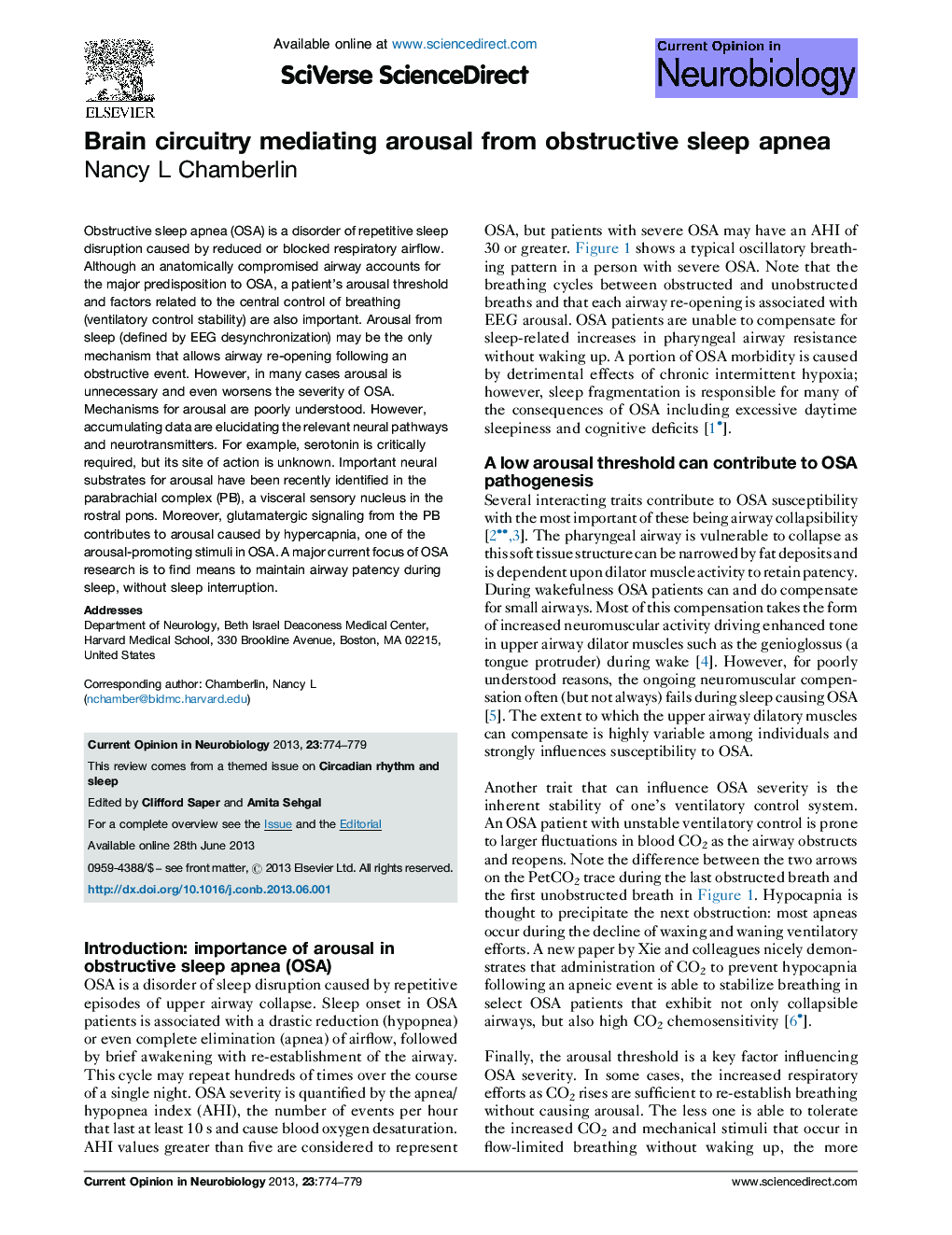| Article ID | Journal | Published Year | Pages | File Type |
|---|---|---|---|---|
| 6266598 | Current Opinion in Neurobiology | 2013 | 6 Pages |
â¢Arousal threshold is an important trait that determines obstructive sleep apnea severity.â¢Several respiratory stimuli associated with airway obstruction promote arousal.â¢Normal hypercapnia-evoked arousal requires intact glutamatergic signaling from the parabrachial nucleus.
Obstructive sleep apnea (OSA) is a disorder of repetitive sleep disruption caused by reduced or blocked respiratory airflow. Although an anatomically compromised airway accounts for the major predisposition to OSA, a patient's arousal threshold and factors related to the central control of breathing (ventilatory control stability) are also important. Arousal from sleep (defined by EEG desynchronization) may be the only mechanism that allows airway re-opening following an obstructive event. However, in many cases arousal is unnecessary and even worsens the severity of OSA. Mechanisms for arousal are poorly understood. However, accumulating data are elucidating the relevant neural pathways and neurotransmitters. For example, serotonin is critically required, but its site of action is unknown. Important neural substrates for arousal have been recently identified in the parabrachial complex (PB), a visceral sensory nucleus in the rostral pons. Moreover, glutamatergic signaling from the PB contributes to arousal caused by hypercapnia, one of the arousal-promoting stimuli in OSA. A major current focus of OSA research is to find means to maintain airway patency during sleep, without sleep interruption.
